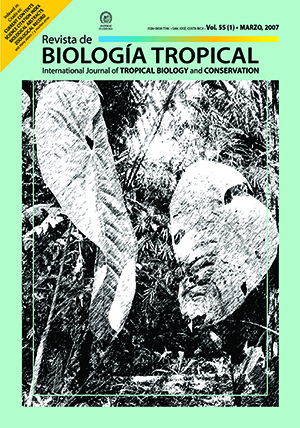Abstract
In order to determine temporal and spatial distribution patterns of Callinectes sapidus, samplings were carried out during the cold-front (January-February), dry (May-June) and rainy (August-September, 2002) climatic seasons, in 30 sampling stations of Chetumal Bay, grouped in sectors A (14 stations), B (eight stations) and C (eight stations). In each sampling station crabs were collected from two transects parallel to the coast, each with three traps, separated by 30 m. Sediments were calcareous coarse and medium sand, white or lightly gray. A total of 1 031 specimens were collected. CPEU (Capture Per Effort Unit) differed spatially and temporally. Highest CPEU was found in sector C with 1.3 ind∙trap-1, and in the rainy season with 1.1 ind∙trap-1. Population was predominantly composed of male individuals. The male:female ratio was 15:1. Males and adults (group II) CPEU was significant different between sectors and climatic seasons. Both males and adults (group II) had a greater CPEU in sector C (1.2 ind∙trap-1) and in the rainy season (1.1 ind∙trap-1). Abundance of female and juvenile individuals (group I) was low during the sampling period whereas group 0 juvenile individuals were not found. A greater relative frequency between sectors and climatic seasons were observed in 130-139 mm and 140-149 mm size interval (CW). C. sapidus occurred on sandy sediments in Chetumal Bay. Pearson product moment correlations exhibited significant relationships between CPEU and temperature, salinity and dissolved oxygen. In Chetumal Bay, the spatial and temporal distribution of C. sapiduscan be related to salinity, temperature, habitat quality, food availability, recruitment and reproduction events of individuals.
##plugins.facebook.comentarios##

This work is licensed under a Creative Commons Attribution 4.0 International License.
Copyright (c) 2007 Revista de Biología Tropical






